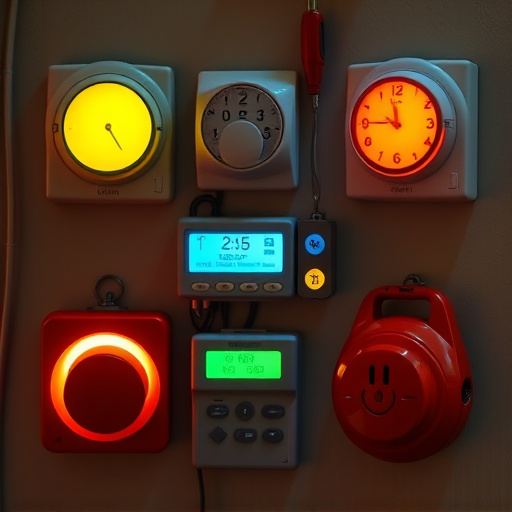Body-worn panic alarms offer immediate personal safety with adjustable volume levels for optimal hearing in diverse environments, enhancing accessibility and reliability. These compact devices cater to individual needs, from outdoor adventurers to those with special needs, providing discreet or loud alerts via powerful sound signals and GPS tracking. Key features include various alert modes, long battery life, water resistance, and real-time monitoring services, ensuring peace of mind through versatile signaling options.
In today’s world, personal safety is paramount. Understanding body-worn panic alarms offers a powerful solution, especially with essential features like monitoring and volume adjustment. This comprehensive guide delves into the intricacies of these devices, highlighting their key benefits and diverse use cases. From choosing the right alarm to optimizing its volume for maximum effectiveness, this article provides valuable insights for individuals prioritizing personal safety.
- Understanding Body-Worn Panic Alarms: A Comprehensive Overview
- The Importance of Monitoring and Volume Adjustment Features
- Key Benefits and Use Cases for Personal Alarm Systems
- Choosing the Right Body-Worn Panic Alarm: Tips and Considerations
Understanding Body-Worn Panic Alarms: A Comprehensive Overview
Body-worn panic alarms are portable personal safety devices designed for immediate attention in emergencies. These compact and discreet devices offer a range of features tailored to individual needs, ensuring users can stay safe while engaging in various activities, from outdoor adventures to daily commutes. At their core, these alarms focus on providing swift assistance with a powerful sound signal, often accompanied by GPS tracking for precise location identification.
One key aspect that sets body-worn panic alarms apart is the ability to adjust personal alarm volume levels. This feature ensures users can customize the alarm’s loudness based on their environment and preferences. Whether in a noisy public space or a quiet private setting, adjusting the volume allows individuals to ensure their alarm will be heard when needed, enhancing personal safety and peace of mind.
The Importance of Monitoring and Volume Adjustment Features
In today’s world, personal safety is of utmost importance, and body-worn panic alarms have become a vital tool for many individuals seeking protection. Among the various features that contribute to their effectiveness, monitoring and volume adjustment capabilities stand out as essential components. Monitoring allows users to ensure their alarm signals are received by emergency services or designated contacts, ensuring swift assistance in case of distress. This feature is particularly crucial for those who frequently find themselves in isolated or high-risk environments, such as security guards, healthcare workers, or individuals with special needs.
Volume adjustment features play a significant role in enhancing the accessibility and reliability of personal alarms. By allowing users to control the alarm’s loudness, these devices cater to diverse hearing abilities and ambient noise levels. In noisy environments, a higher volume ensures the alarm is heard above the hustle and bustle, while in quieter settings, a lower volume setting prevents unnecessary alerts. This adaptability not only improves the user experience but also guarantees that the alarm will be noticed when it matters most, making personal alarm volume adjustment features a game-changer in terms of safety and peace of mind.
Key Benefits and Use Cases for Personal Alarm Systems
Personal alarm systems with body-worn designs offer a range of key benefits, especially in situations where immediate assistance is required. These compact devices are designed to be easily accessible and provide users with a sense of security and peace of mind. One of the primary advantages is the Personal Alarm Volume Adjustment Features, allowing individuals to set the sound level according to their preference and environmental noise. This ensures that the alarm is loud and noticeable when needed, without causing distress to others in nearby areas.
Use cases for these personal alarms are diverse. They are particularly useful for outdoor enthusiasts who may encounter unexpected hazards during their activities. For instance, hikers or campers can use them as a safety net against wildlife encounters or to signal for help in remote locations. Additionally, these devices are valuable for individuals with special needs or those living alone, providing them with an extra layer of protection and the ability to quickly alert emergency services or caregivers when facing distress or danger.
Choosing the Right Body-Worn Panic Alarm: Tips and Considerations
When selecting a body-worn panic alarm, consider your specific needs and preferences. Look for devices with adjustable volume levels, ensuring you can signal for help discreetly or loudly, depending on the situation. This feature is crucial for those in high-risk environments where communication might be challenging. Additionally, explore models offering various alert modes, such as vibration and LED flashes, to accommodate different sensory needs.
Other valuable features include long battery life, water resistance, and easy deployment. Some devices even offer monitoring services that allow loved ones or emergency contacts to receive alerts in real-time, enhancing safety further. Compare different brands and models to find one that suits your lifestyle and provides peace of mind.
Body-worn panic alarms, equipped with monitoring and volume adjustment features, offer unprecedented personal safety. By understanding their key benefits and choosing the right device, individuals can empower themselves in various situations. These alarms serve as a powerful tool, ensuring peace of mind and swift assistance when needed most. With the right fit and adjustable volume, users can navigate potentially dangerous scenarios effectively.
